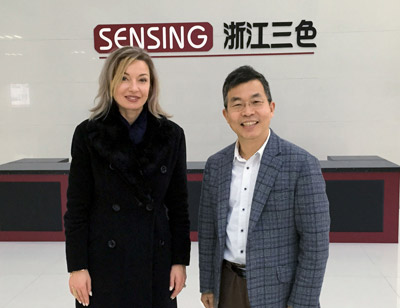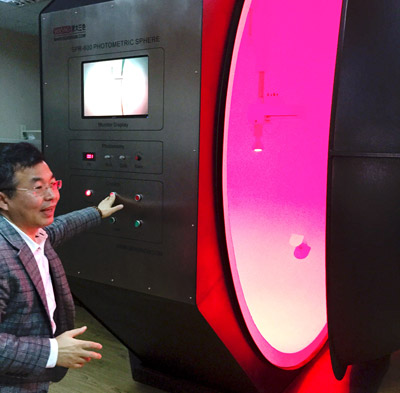The lights in your home and at the office can make a difference to the way you feel and can even affect your health. In fact, according to a 2015 statement issued by the International Commission on Illumination (CIE), entitled Recommending proper light at the proper time, the “non-visual” effects of light are the influence of light on our circadian clock, alertness, sleep patterns and so on.
While the CIE cautions that knowledge in this field is still “premature”, it goes on to say that “observations in laboratory and application studies show beneficial effects on human health and performance”. There is general agreement that the non-visual effects of light stimulus depend on the spectrum, intensity, duration, timing and temporal pattern of the light exposure.
The variety of physiological responses means researchers are looking at the clinical implications of lighting from a healthcare perspective. In order to get a deeper understanding of what this means in terms of lighting design, we spoke with Prof. Tongsheng Mou, Director of Smart & Health Lighting Research Center, in Zhejiang, China, and founder of Sensing Instruments Co, Ltd, a company dealing with high-quality optical equipment.
ISOfocus: Why is lighting important?

Prof. Tongsheng Mou: Light is a huge aspect of our daily functioning environment, enabling us to see our world in order to interact with it. Light also has an often overlooked impact on our behaviour due to “non-visual” effects. Light exerts these non-visual effects as a regulator of our physiology, hormonal and behavioural systems and serves to drive our 24-hour sleep/wake cycle known as the “circadian rhythm”.
So what kind of behavioural responses are controlled by light? In short, nearly everything! From levels of cortisol, hunger hormones and body temperature, light really does impact every aspect of our daily physiology and behaviour. Humans are subjected to a substantial amount of artificial lighting, so there is an urgent need to control the luminous environment to promote health and avoid harm.
How bright is the lighting industry?
In the lighting industry, product evolution is advancing, moving from regular LEDs to human-centric lighting (HCL) that can benefit the biological, emotional, health and well-being of people. This is achieved by dimming the smart light source to mimic the levels of sunlight throughout the day.
HCL, a LED-based lighting technology that aims to match light characteristics with human circadian rhythms, is a potential area on which manufacturers are setting their sights and investing in what they hope will be a bright future.
IHS Technology, an analytics consultancy with expertise in a number of industries, forecasts the global HCL market is expected to grow from USD 34 million in 2015 to USD 805 million in 2020. Of course, HCL is a very recent concept, as noted in the Lighting Executive Insight Report (2014). There are no industry-wide definitions or standards yet, and itʼs difficult to predict what the market will look like five years from now.


So how is Sensing involved in lighting breakthroughs?
Here, at Sensing, we focus on high-quality optical equipment used in the lighting quality measurement and photobiological safety assessment. We have pioneered many key breakthroughs in lighting over the past ten years. In fact, we recently developed life-rhythm lighting lamps and lamp systems, specifically engineered to help facilitate a healthy circadian rhythm. This new technology is expected to improve sleep and performance by mimicking a normal day/night cycle.
New products like these lamps and lamp systems, together with recent studies by major universities and health organizations, have increased the publicʼs awareness of the close link between light and health. The technology provides new options to help support good health by using the right light, at the right time, for the right task.
Where do standards fit in?
The effect of light on the body represents a new opportunity to advance the lighting industry, as well as new lighting standards and guidelines. At Sensing, we believe it is important to participate in the work of ISO technical committee ISO/TC 274, Light and lighting, as the future International Standards to come out of these discussions will provide a platform for consistent language with regard to product design, manufacturing and testing for the latest state-of-the-art technologies, not to mention ensure public safety and consumer protection.
As the general lighting landscape continues to evolve, each technology will come with advantages and disadvantages in terms of energy efficiency and light quality, but one thing will remain the same – the importance of standards. The quality, performance, and safety of our lighting environment, not to mention our quality of life will depend on them. So letʼs work together for an even brighter future.
What does the future hold?

Although scientific researchers still have numerous questions in this field, the first results emerging from the application of these new findings on the non-visual effects of light open a very promising future for improvements. This is true for professional lighting as well as lighting at home.
Before truly human-centric lighting can be developed, however, further investigation needs to be conducted into the relation between lighting and health. One the challenges ahead will be sustaining enough interest (and research funding) to develop that knowledge, so that future lighting systems – and the standards that support them – fulfil the promise of delivering “light for life”.

